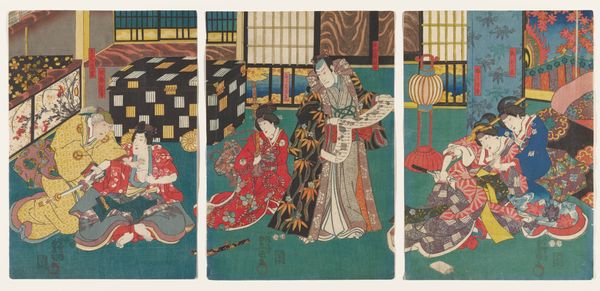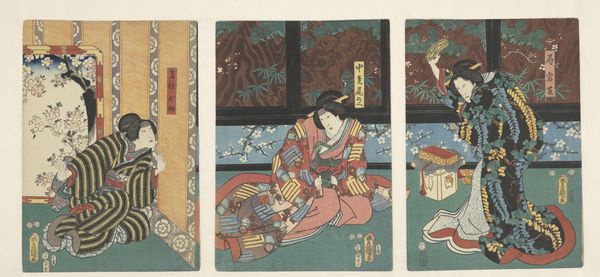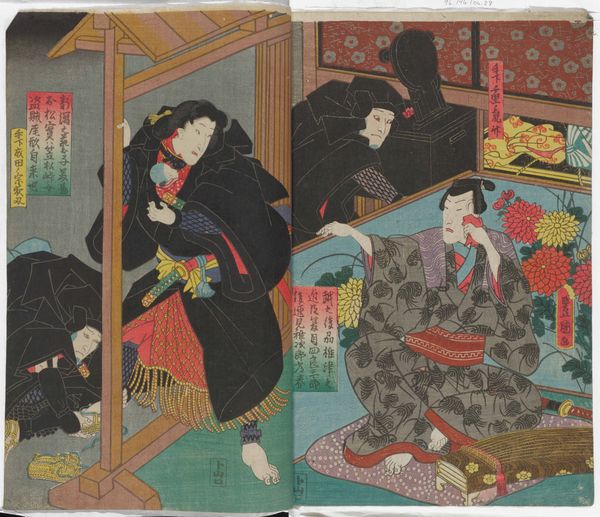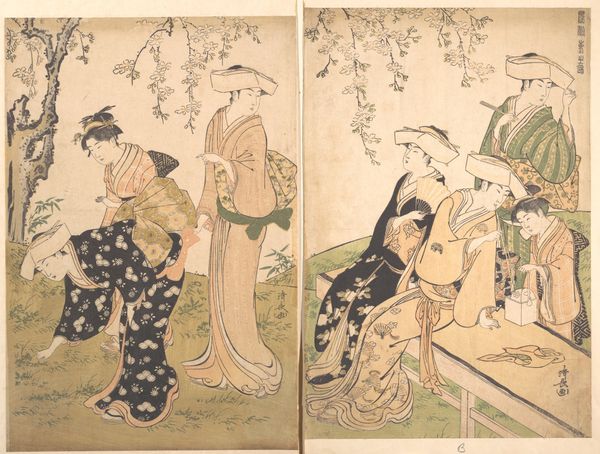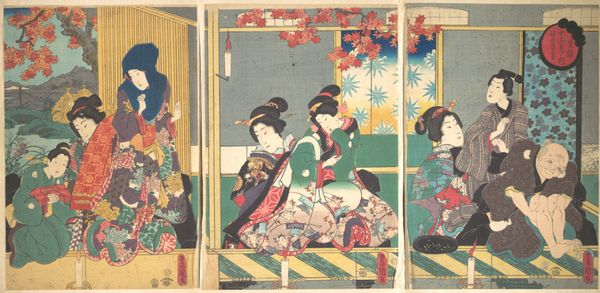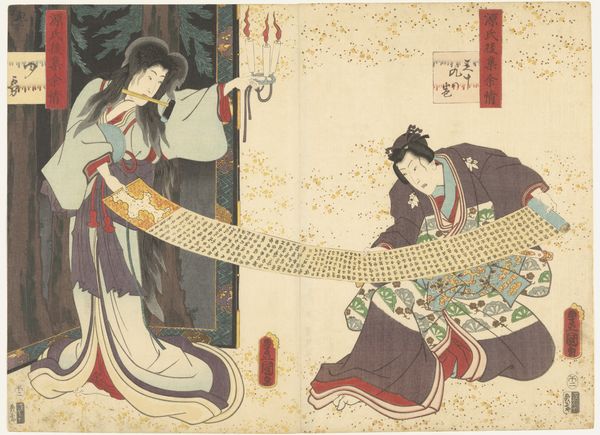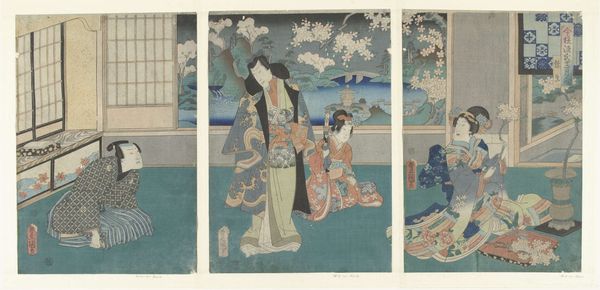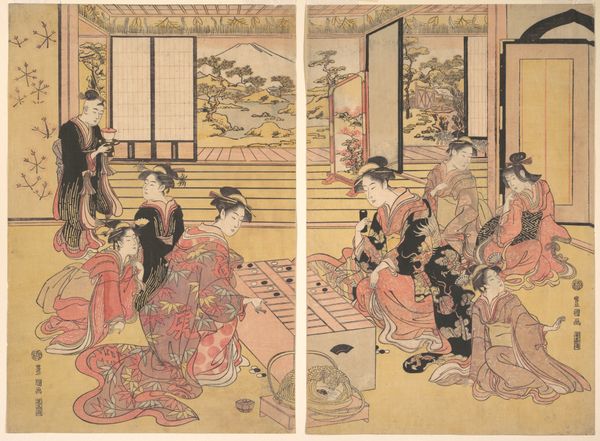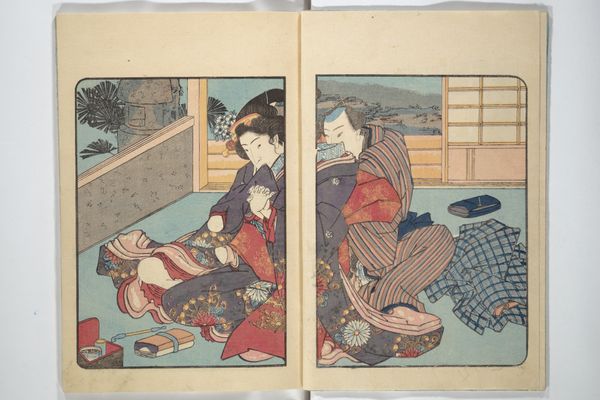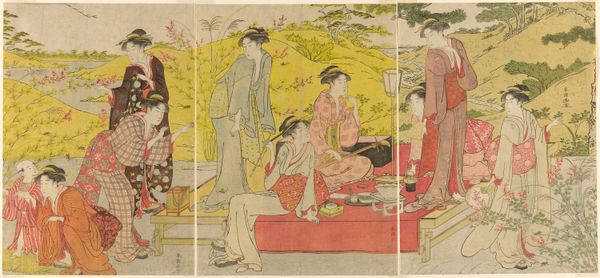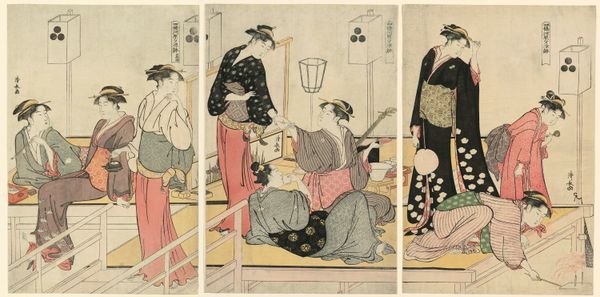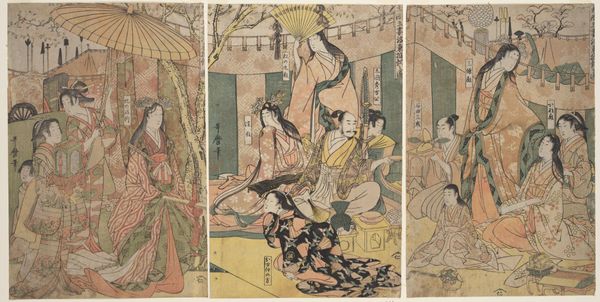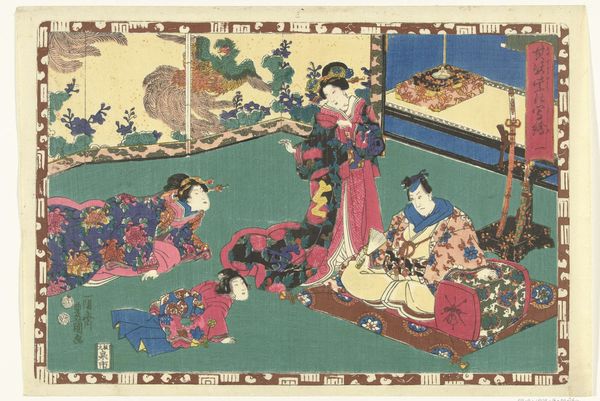
Actors Onoe Kikujirō II as Fuji no Kata c. 1851 - 1858
0:00
0:00
print, ink, woodblock-print
#
portrait
# print
#
asian-art
#
ukiyo-e
#
japan
#
figuration
#
ink
#
woodblock-print
#
genre-painting
Dimensions: 14 × 9 3/4 in. (35.56 × 24.7 cm) (image, sheet, vertical ōban, each)
Copyright: Public Domain
Curator: This colorful woodblock print by Utagawa Kunisada, dating from the mid-19th century, is titled "Actors Onoe Kikujiro II as Fuji no Kata." I'm curious about your first reaction. Editor: Immediately, I notice the bold lines and vibrant, flat colors. It's visually striking, the patterning is very stylized, and that stark black lacquered box dominates one panel. Curator: Let's contextualize it a bit. Kunisada was a leading printmaker of ukiyo-e, often depicting actors and scenes from Kabuki theater. Prints like these served as a form of popular media and celebrity culture for the burgeoning merchant class in Edo-period Japan. The theatrical context is vital for unpacking this imagery. Editor: The division into two panels and the compositional elements fascinate me. Consider how the artist uses asymmetry to create visual interest, or the contrast of soft versus sharp edges in the figures' drapery. Curator: It's also crucial to understand the societal roles portrayed. Kabuki was traditionally a male-dominated form, so a male actor portraying a female role, the Fuji no Kata, further complicates the visual language. The print plays with the viewers understanding of gender and performance in a way that challenges us to understand the conventions of the time. Editor: Do you think the color choices enhance these notions of assumed understanding and/or identity? Note how the robes pop; and see how these saturated planes emphasize the artifice of the staged scene. It pulls the viewer into a heightened reality. Curator: Exactly. And to add to the discussion on gender and power dynamics, consider the role of women, depicted behind the seated central figure and on the lower right. Their expression seems of concern, or pensiveness while observing the Kabuki presentation. Editor: Yes. Each of these women in a seated pose looks trapped in position, seemingly powerless against what may be taking place center stage. Curator: So when we think about this piece, it speaks to so many layers – from its function as mass media to its presentation of fluid gender roles, to questioning traditional dynamics. The Kabuki stage acted as a microcosm for wider social and political commentaries. Editor: Indeed. Through formal devices, the piece reflects both the staged drama within and the social dynamics of its broader world. Curator: Thank you. It highlights, for me, the power of prints such as this in offering an invaluable glimpse into the complexities of Edo society. Editor: For me, looking closely reminds us of the intricate relationship between form and meaning. Thank you.
